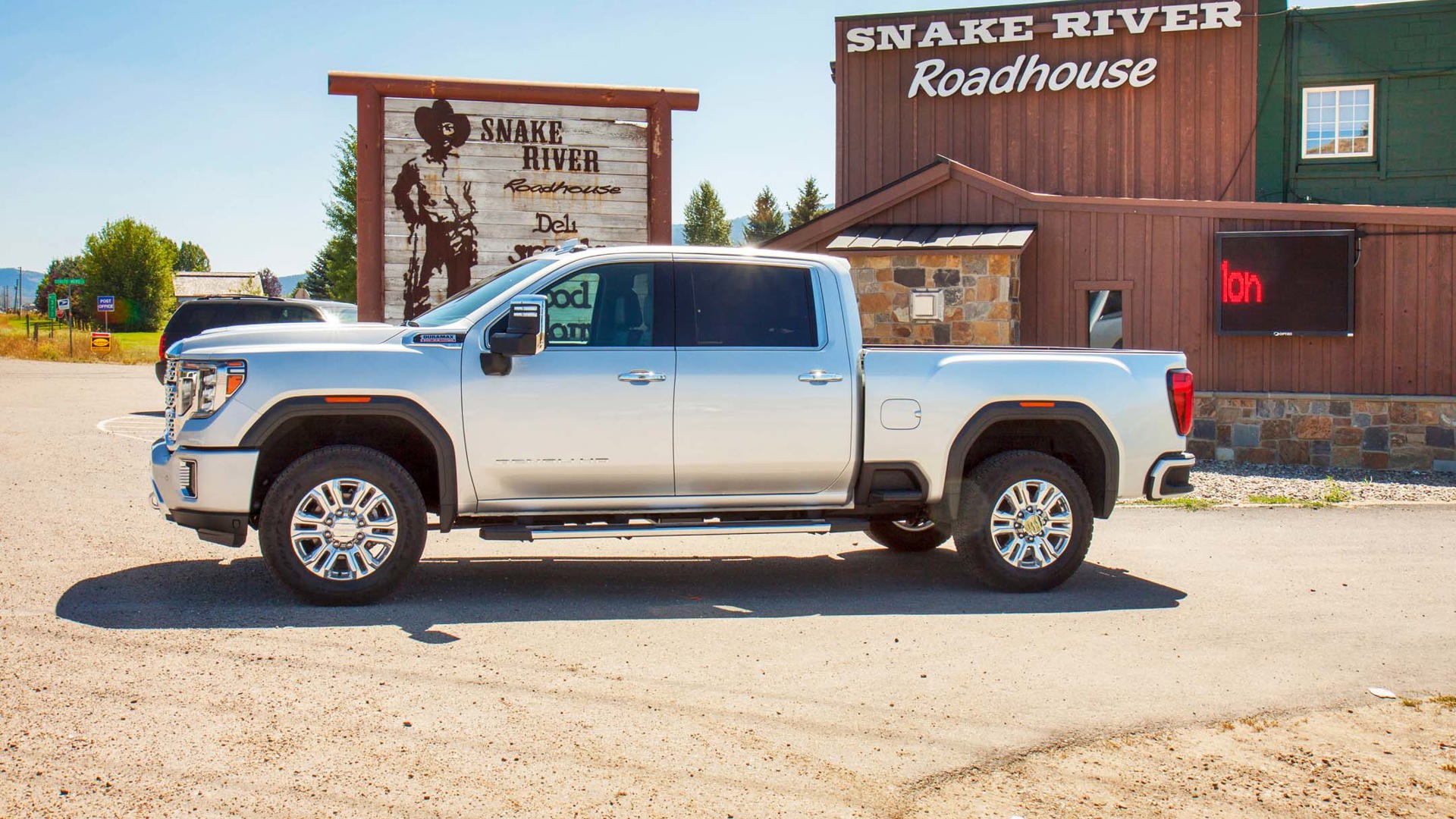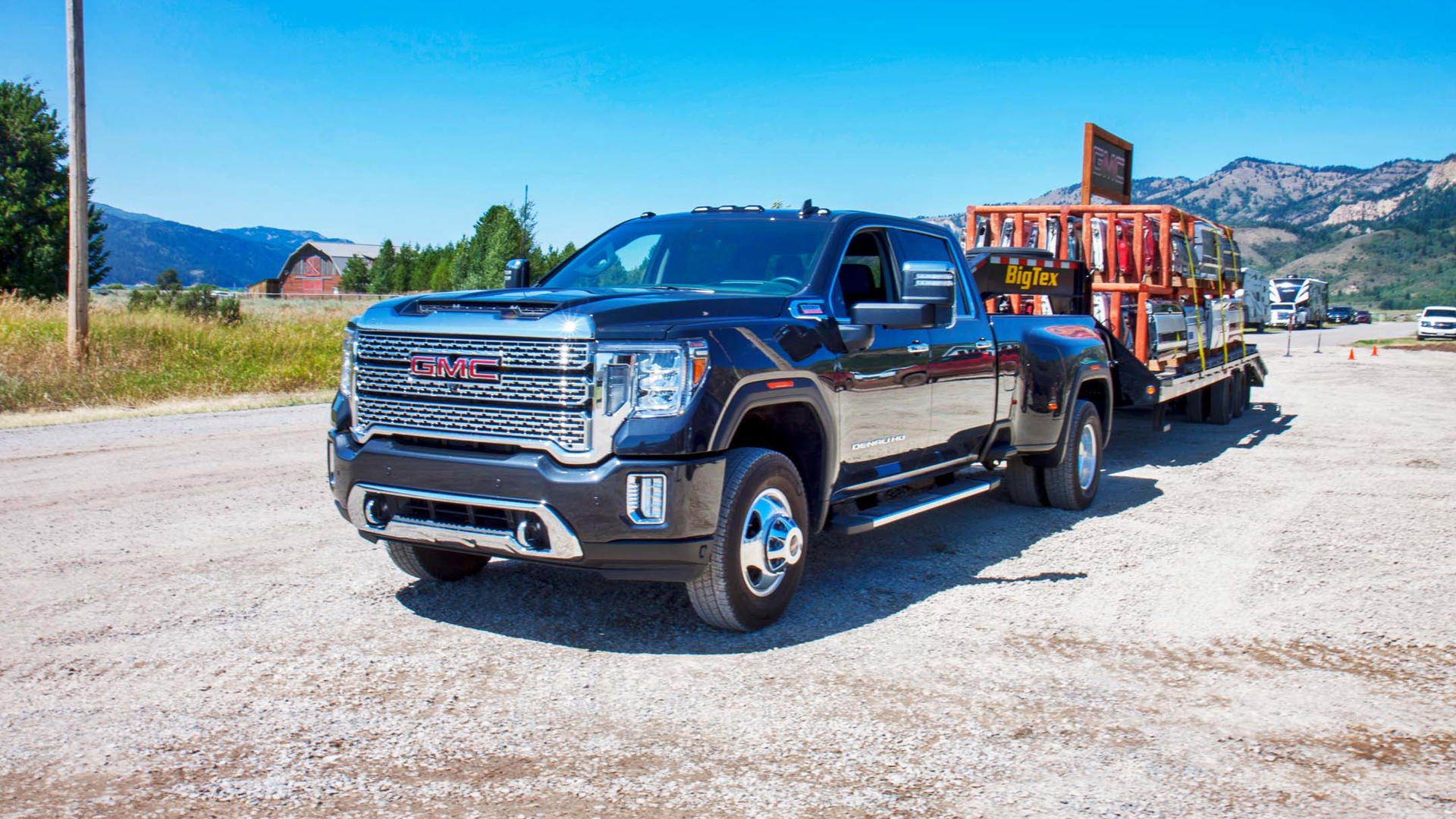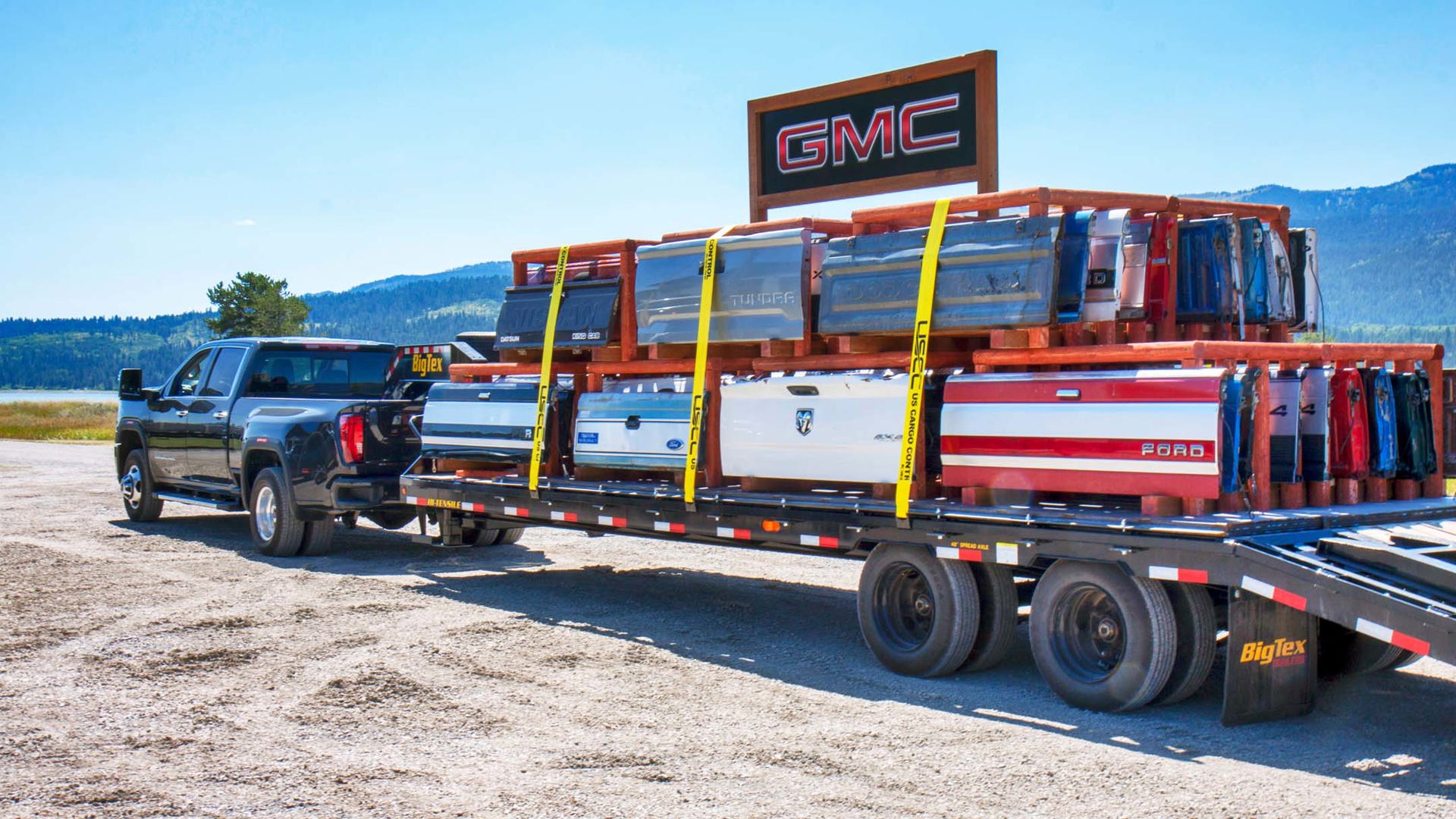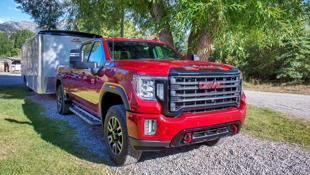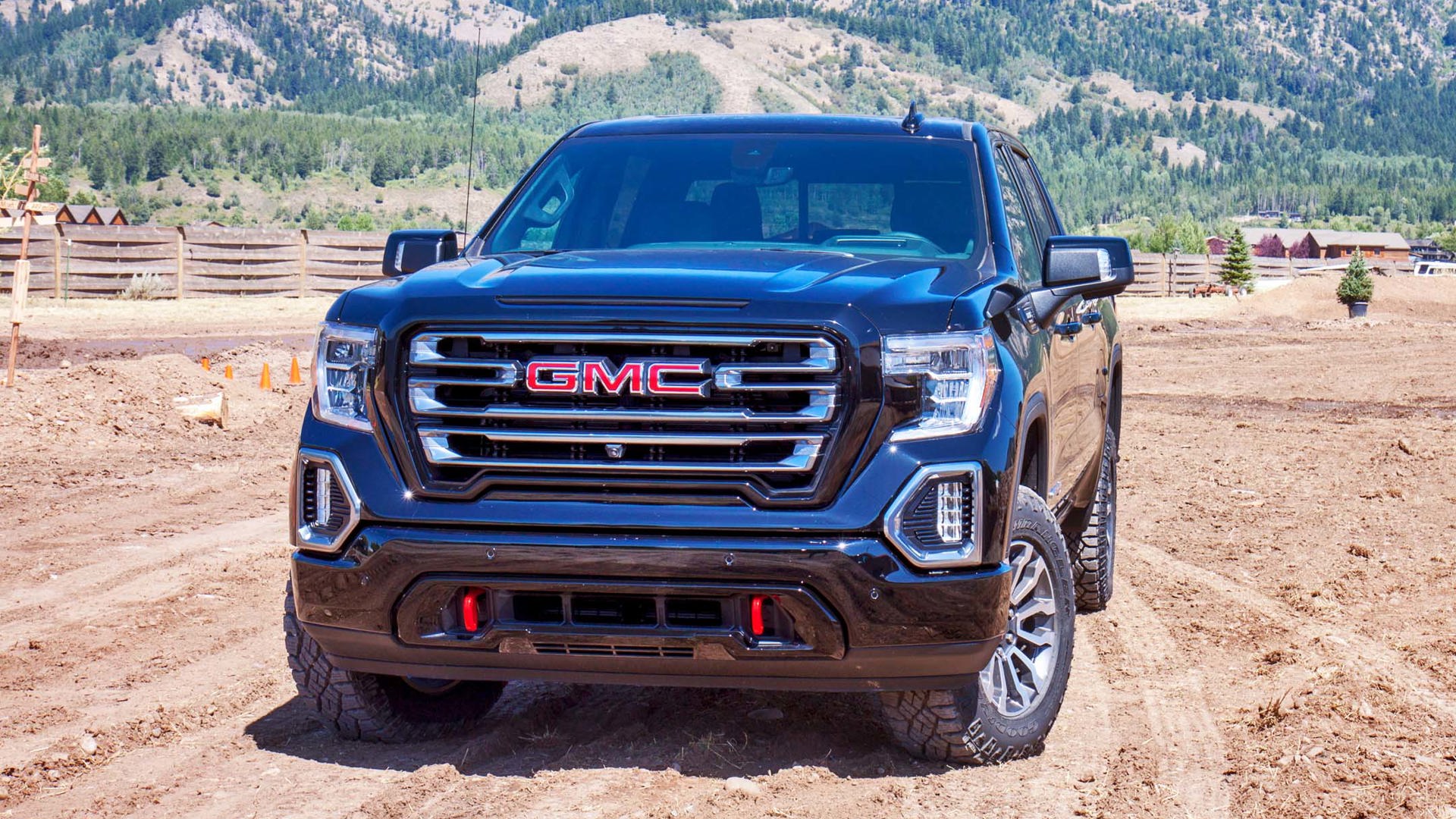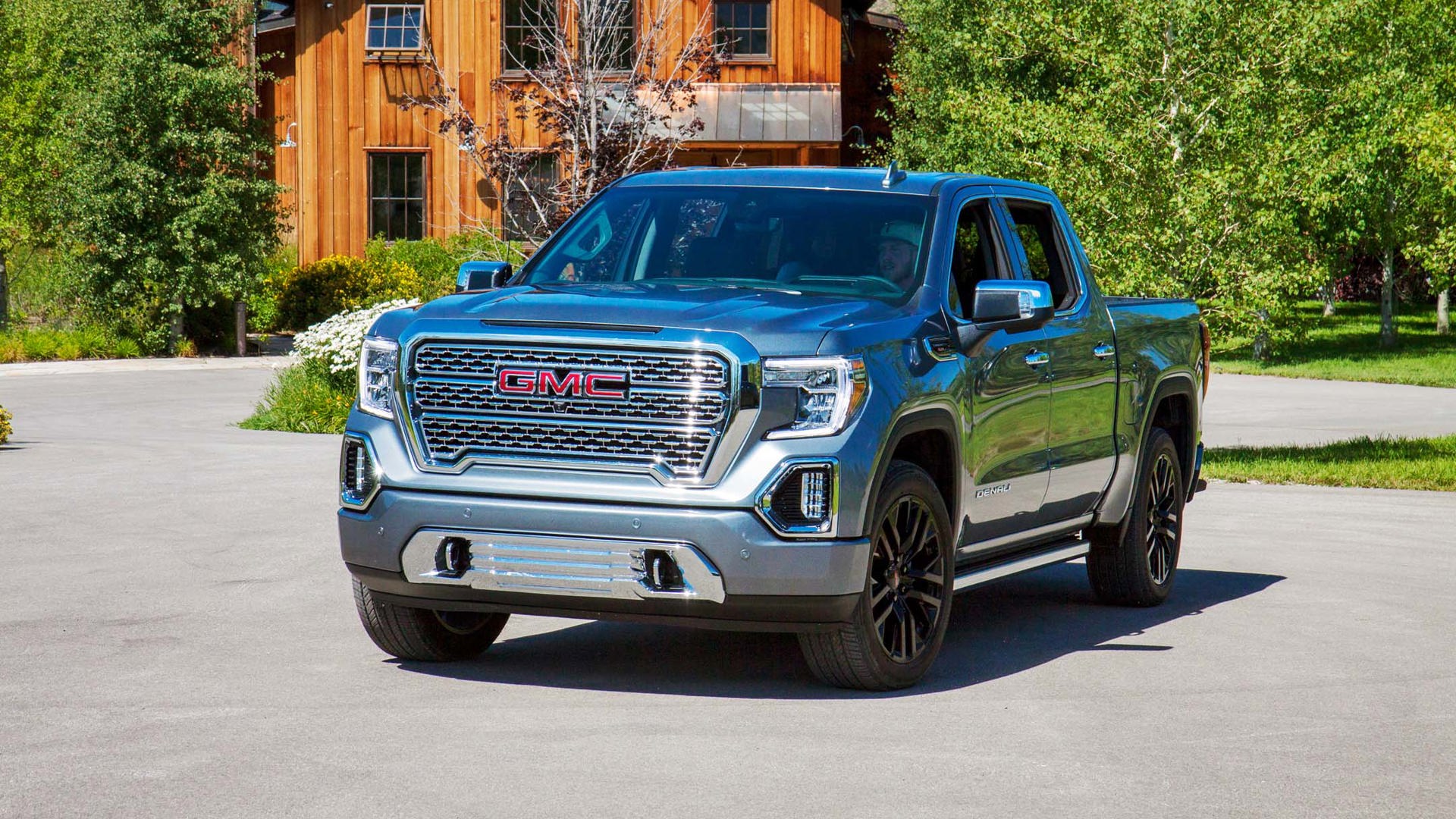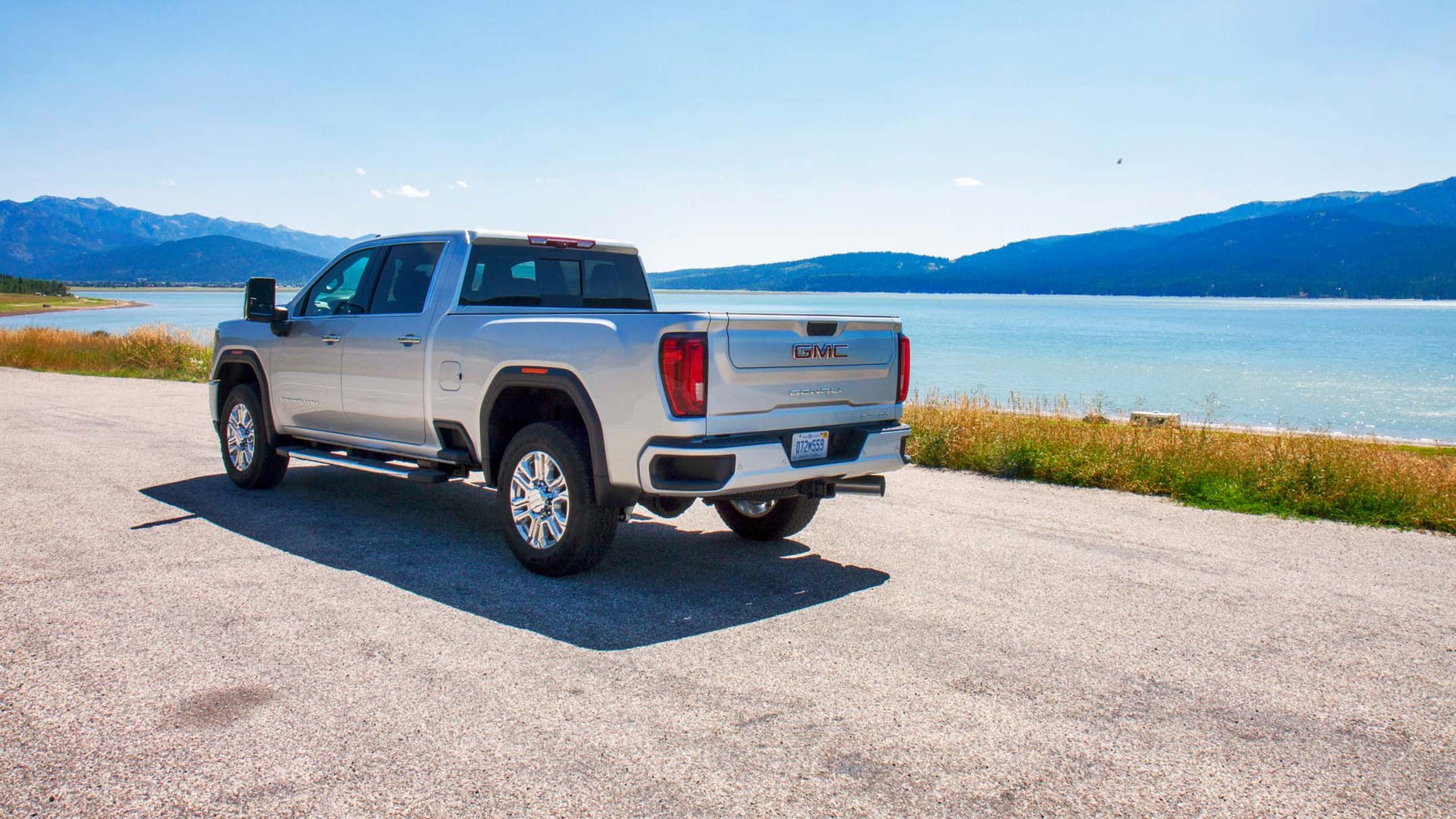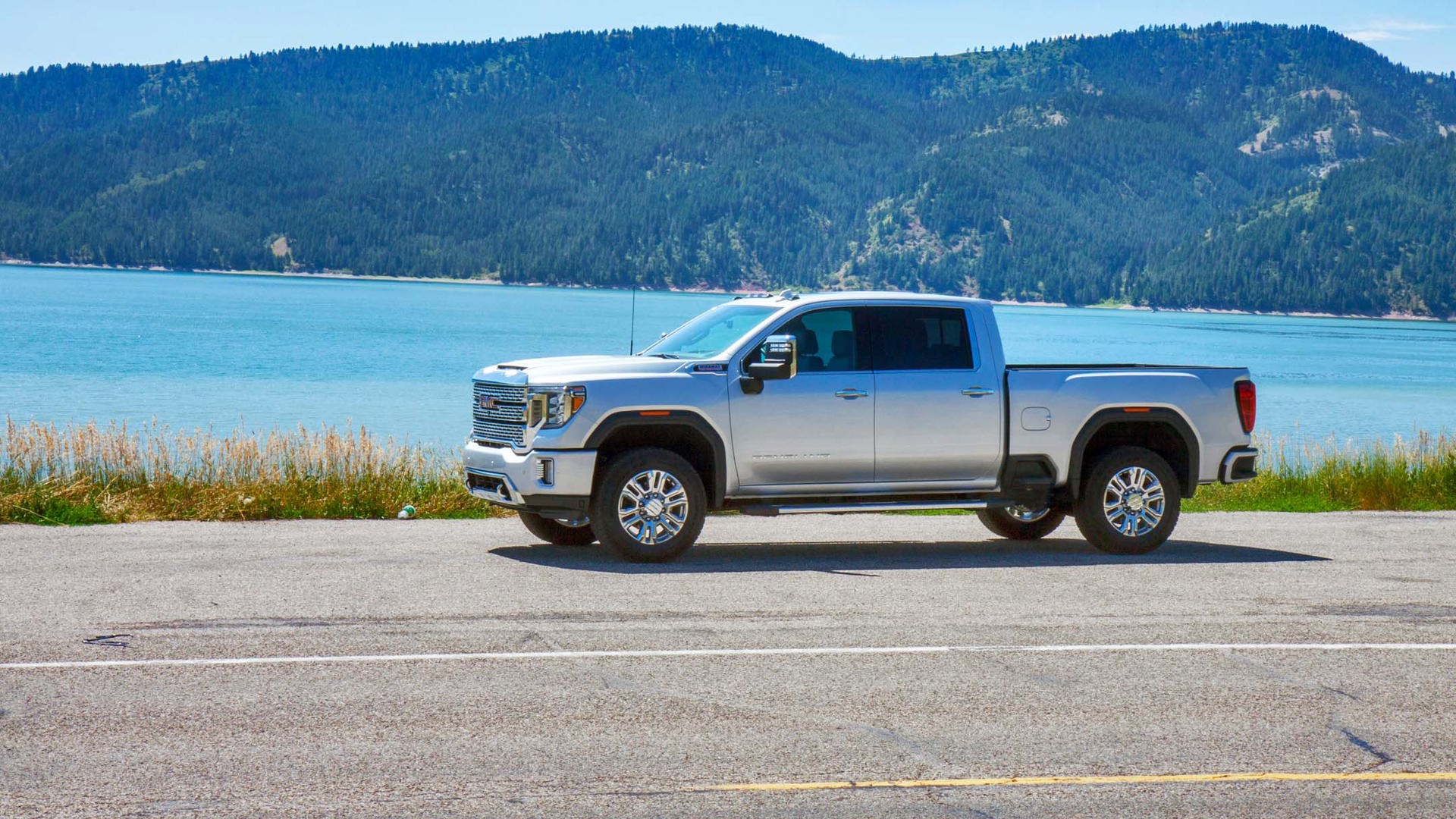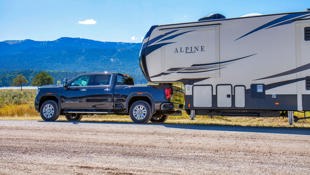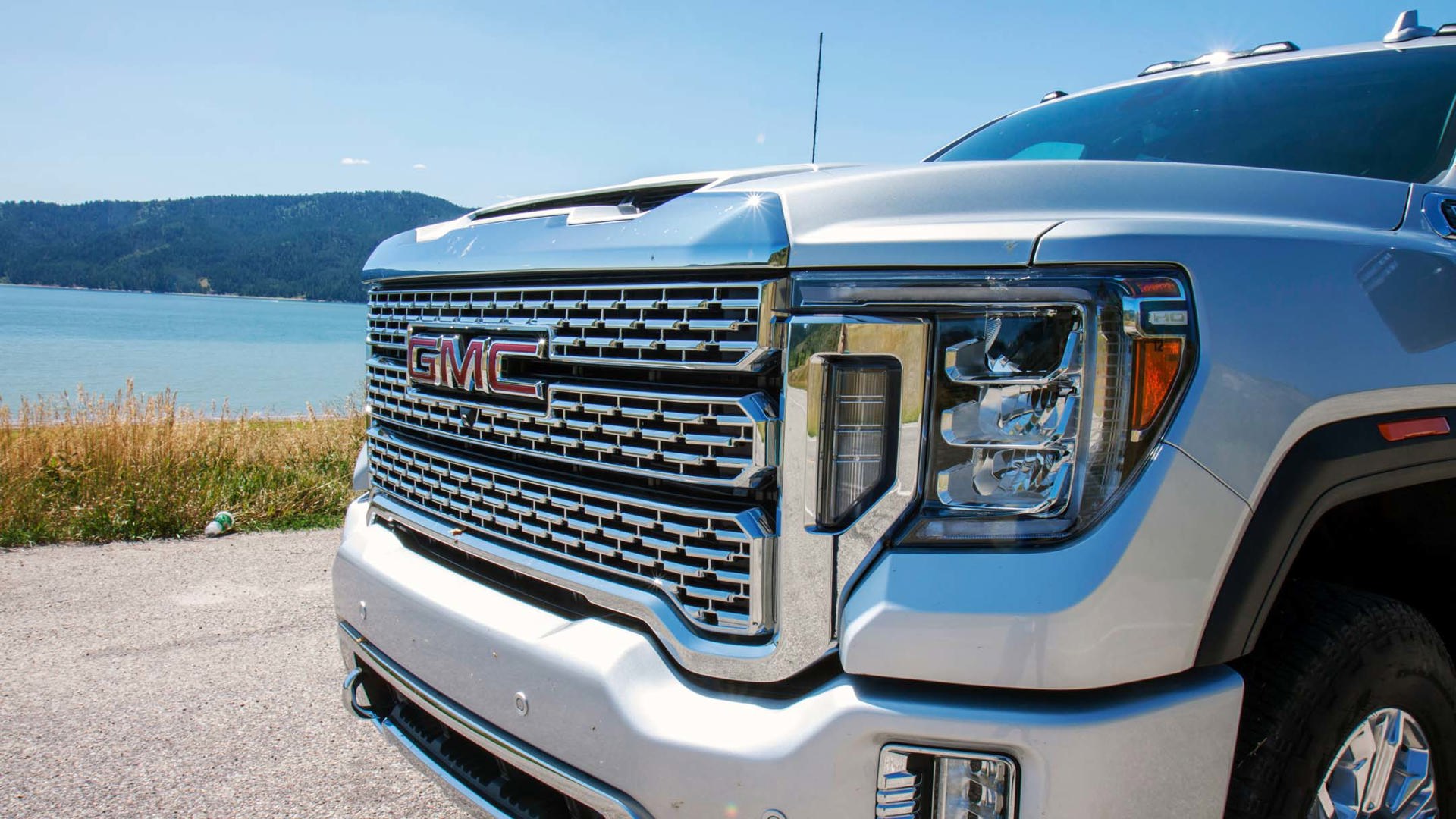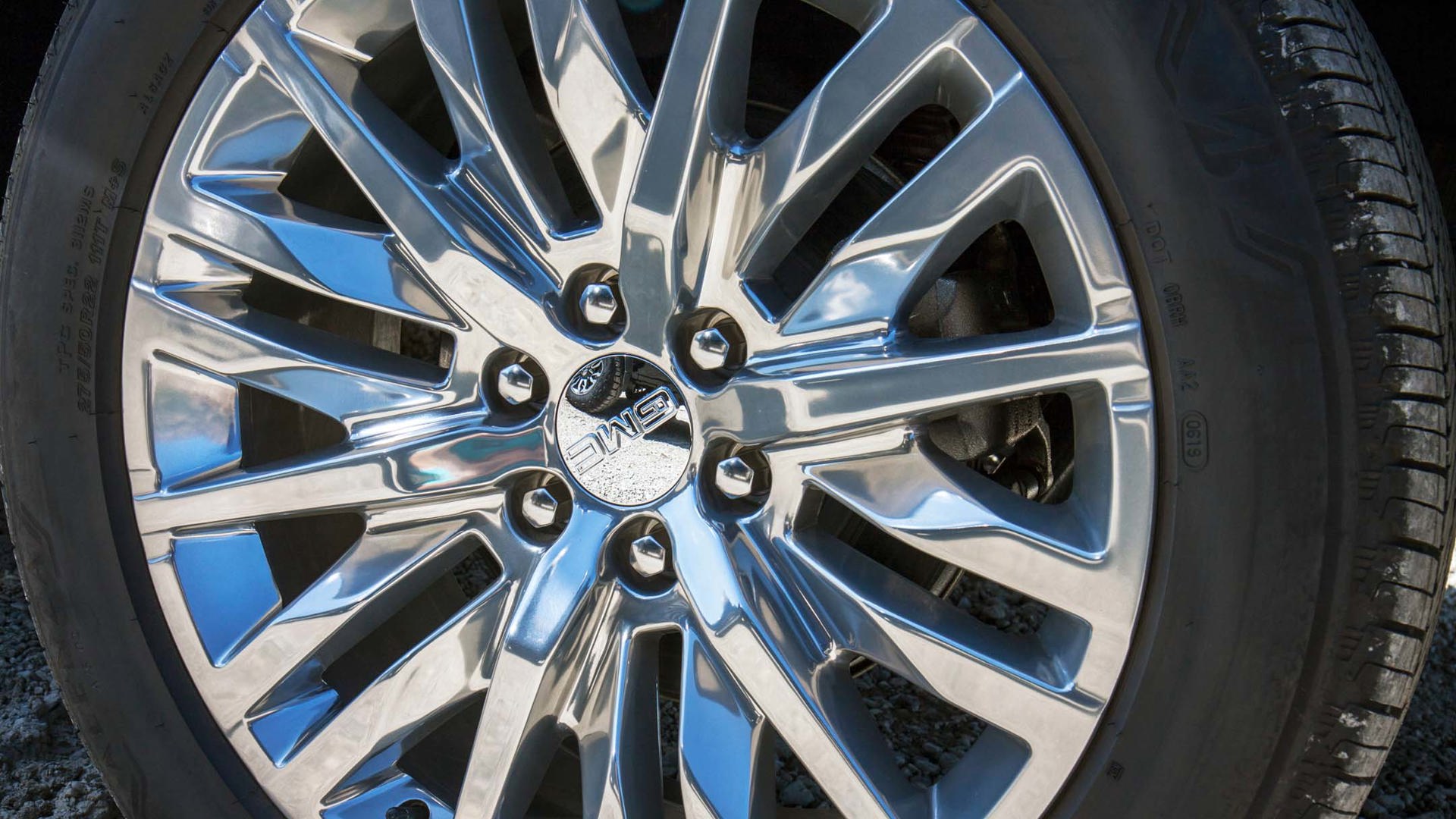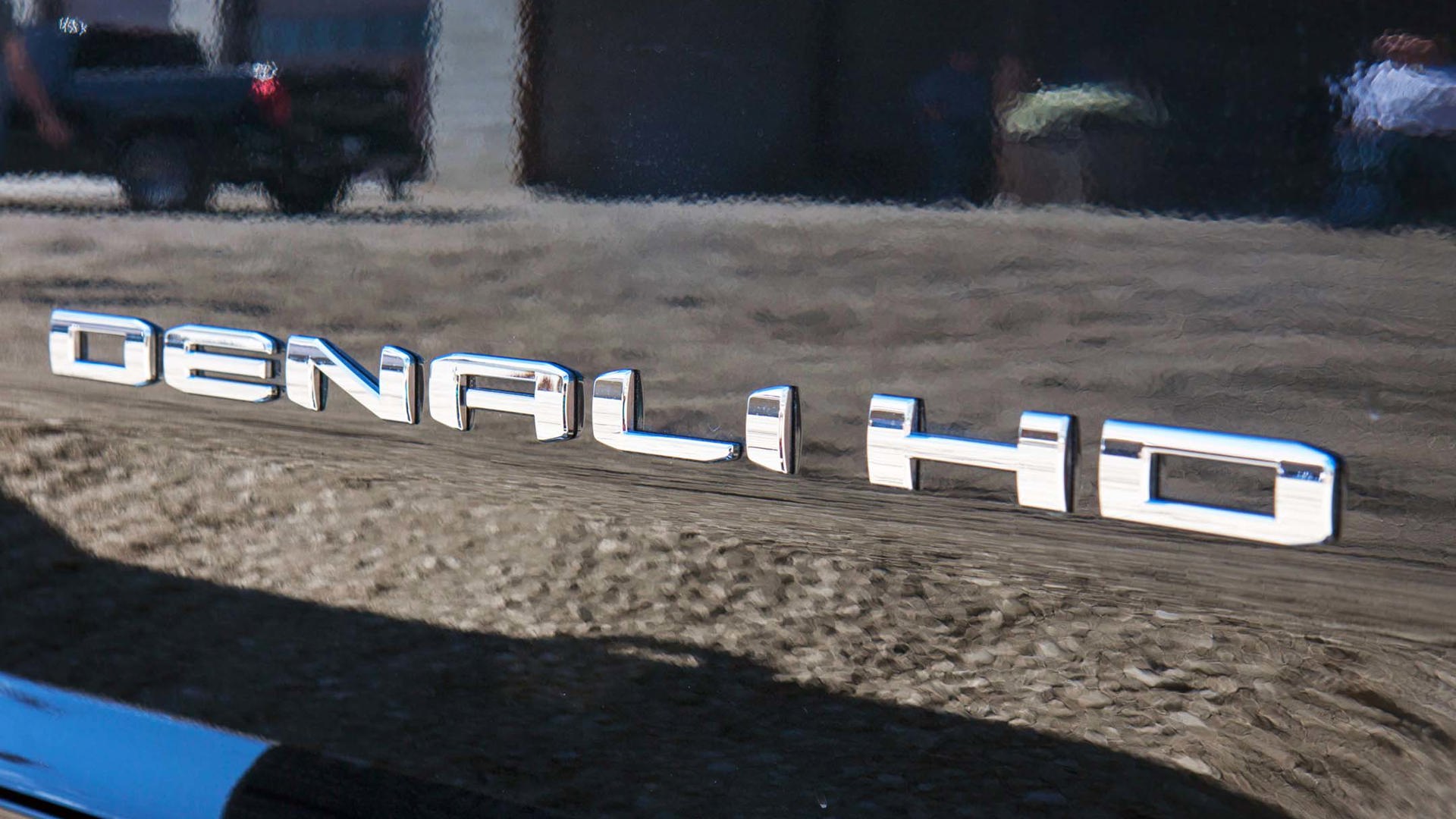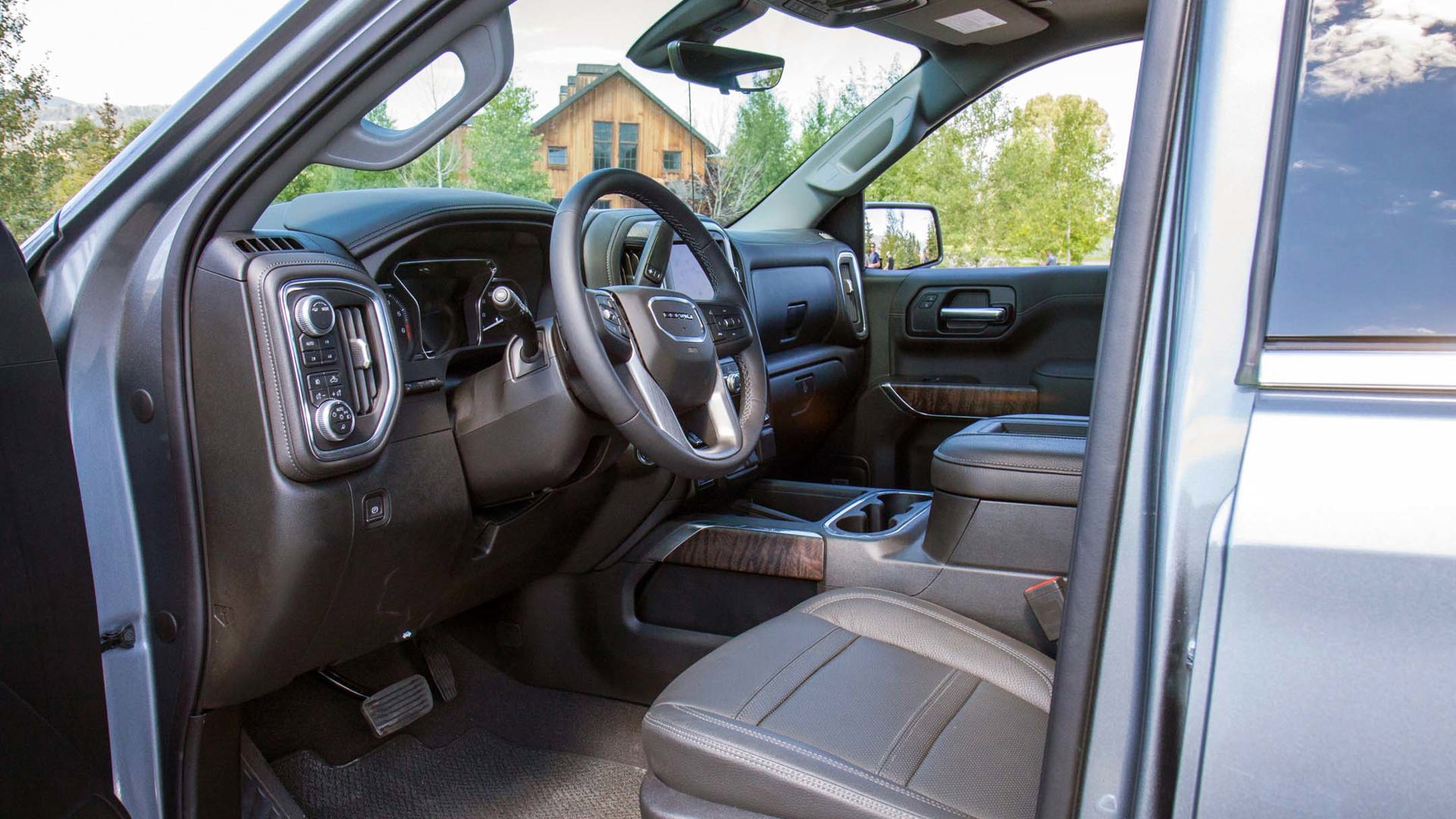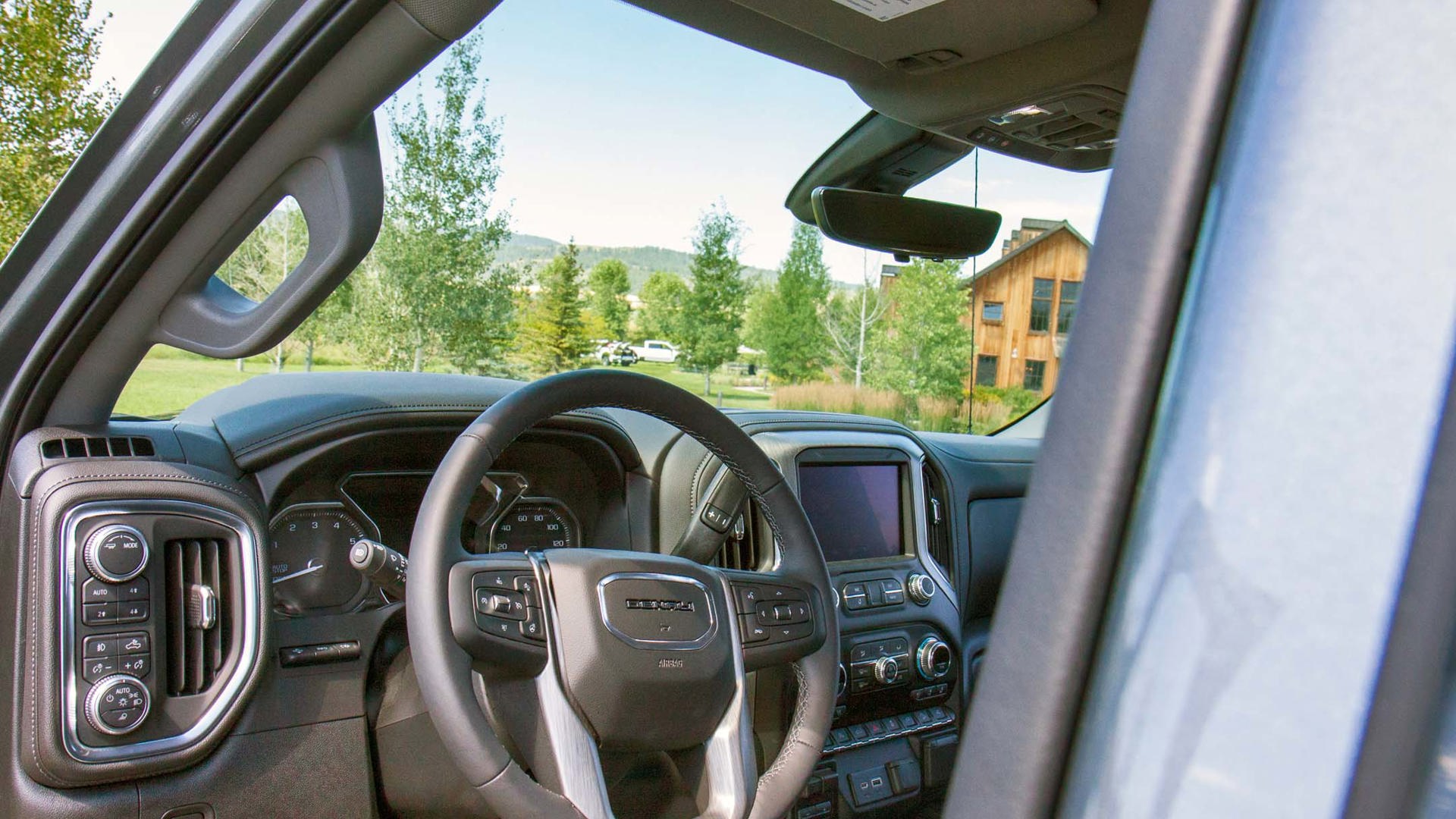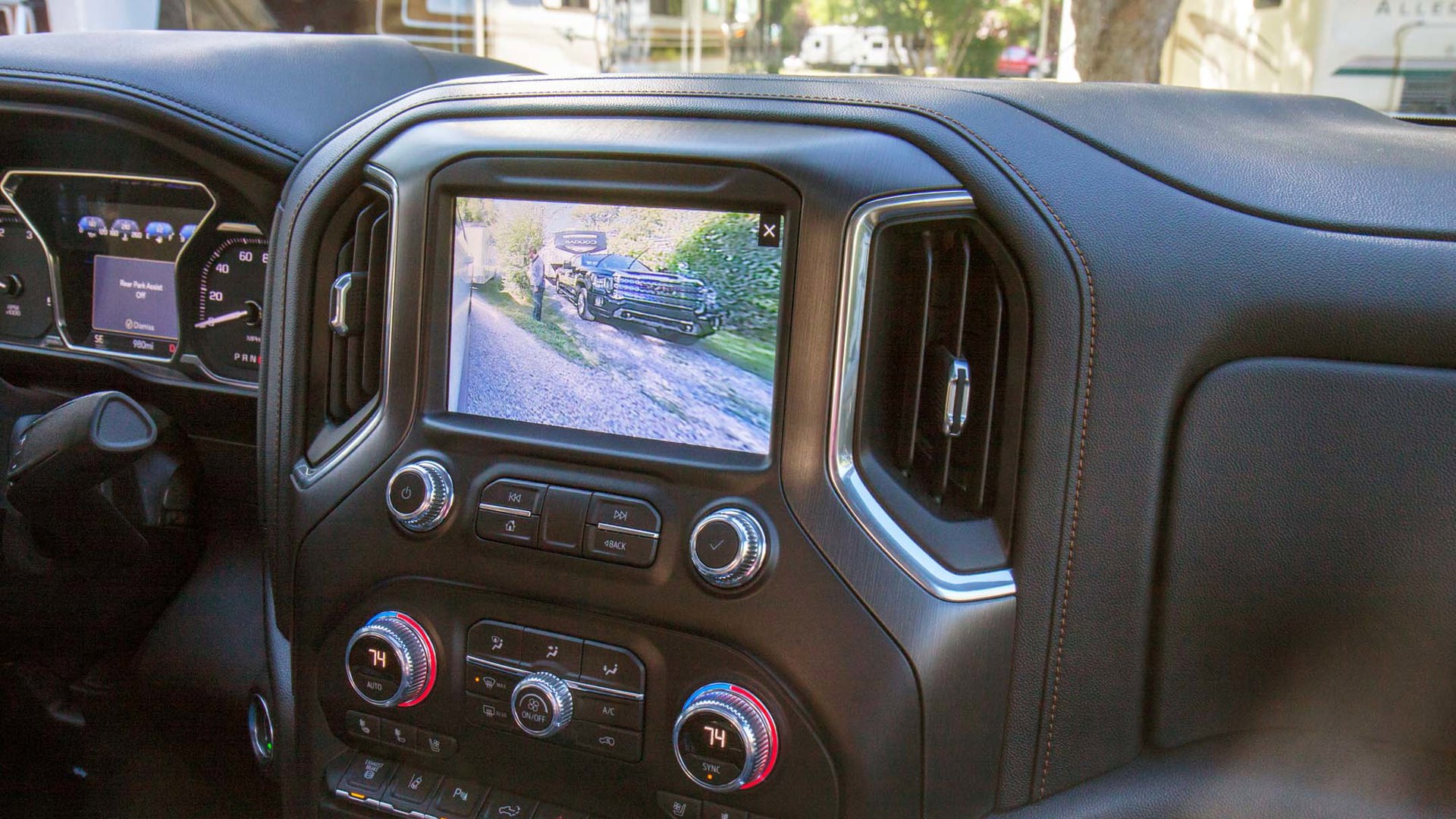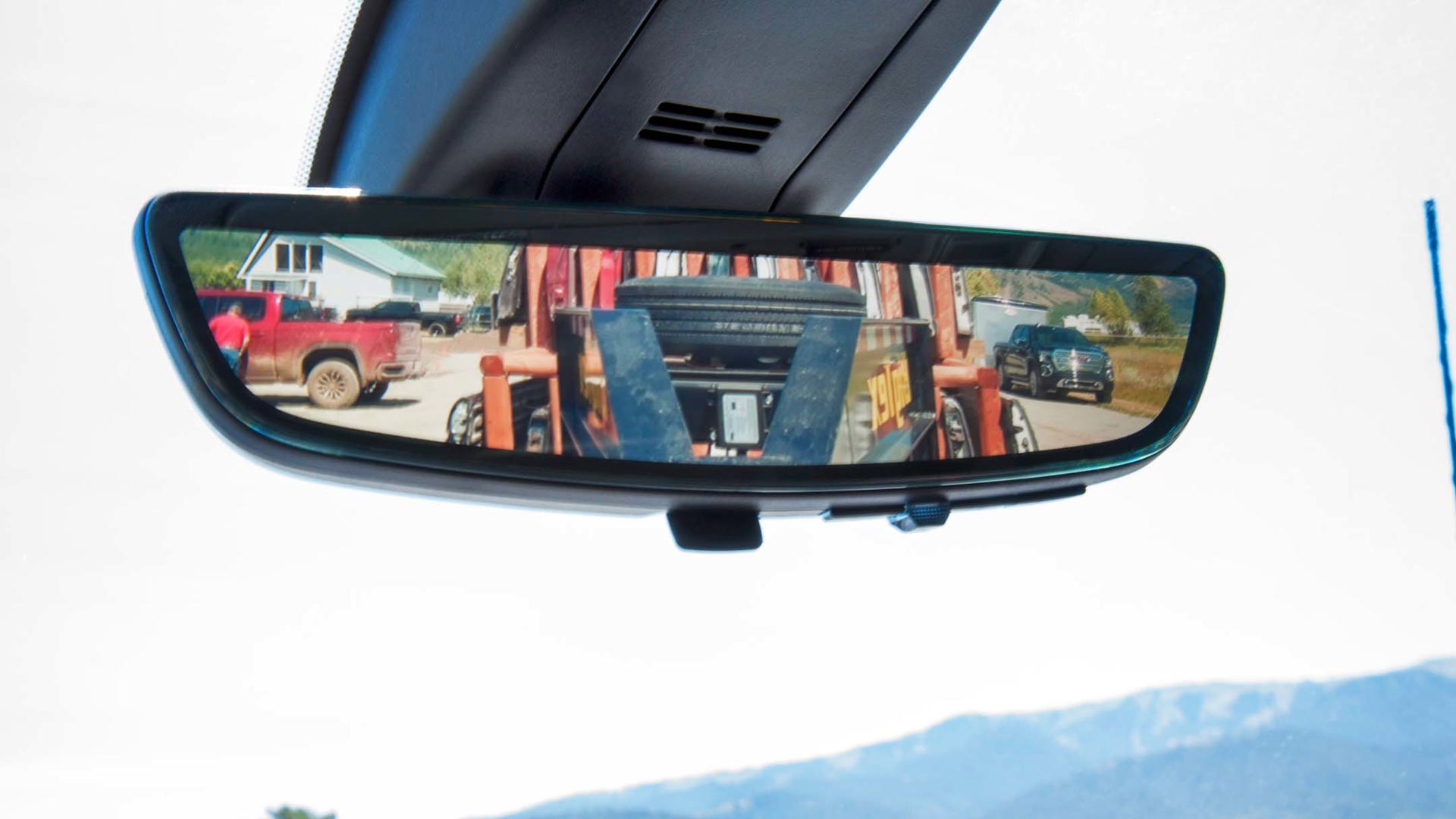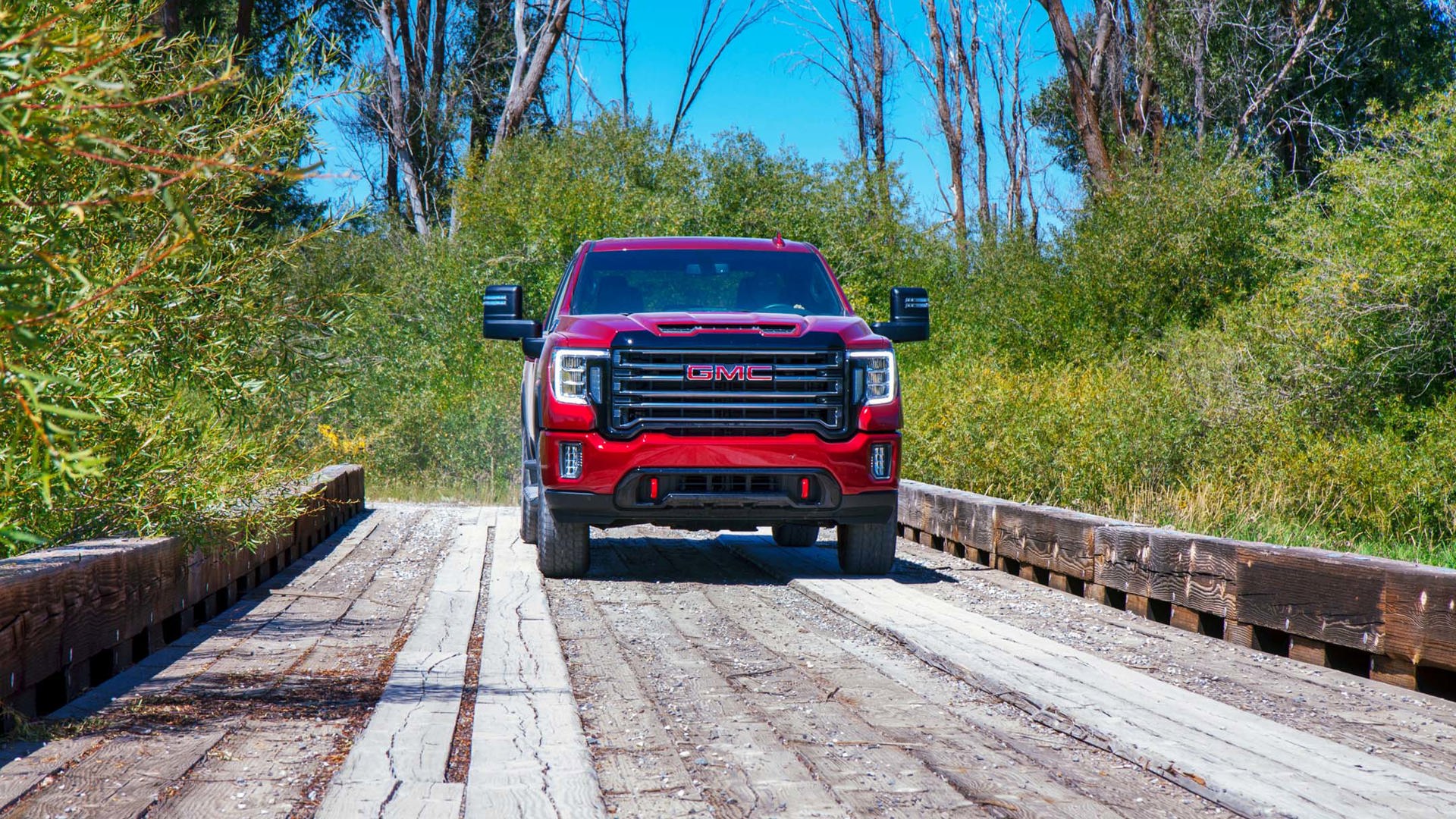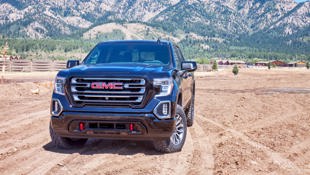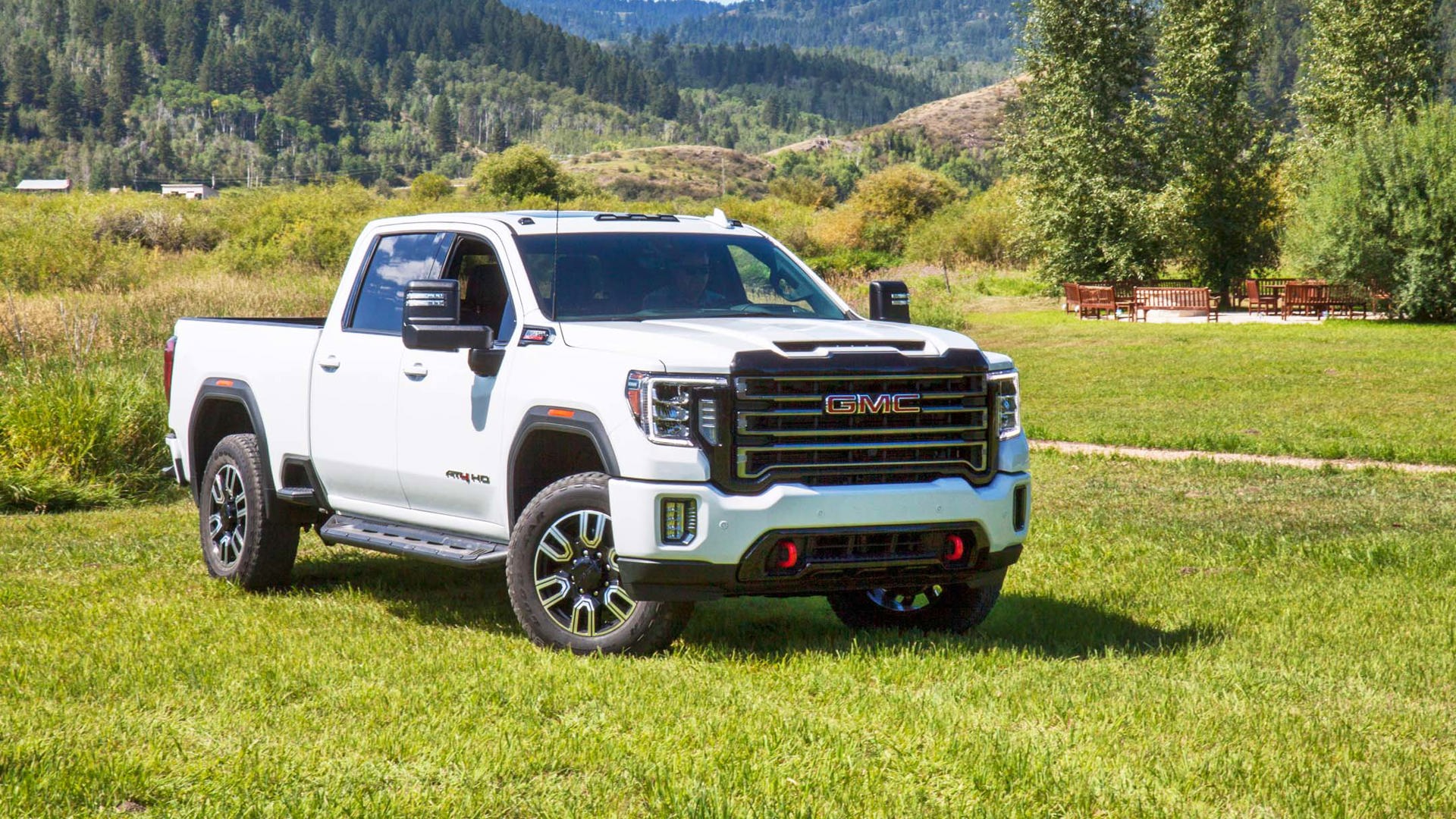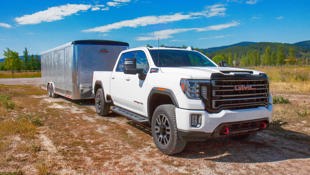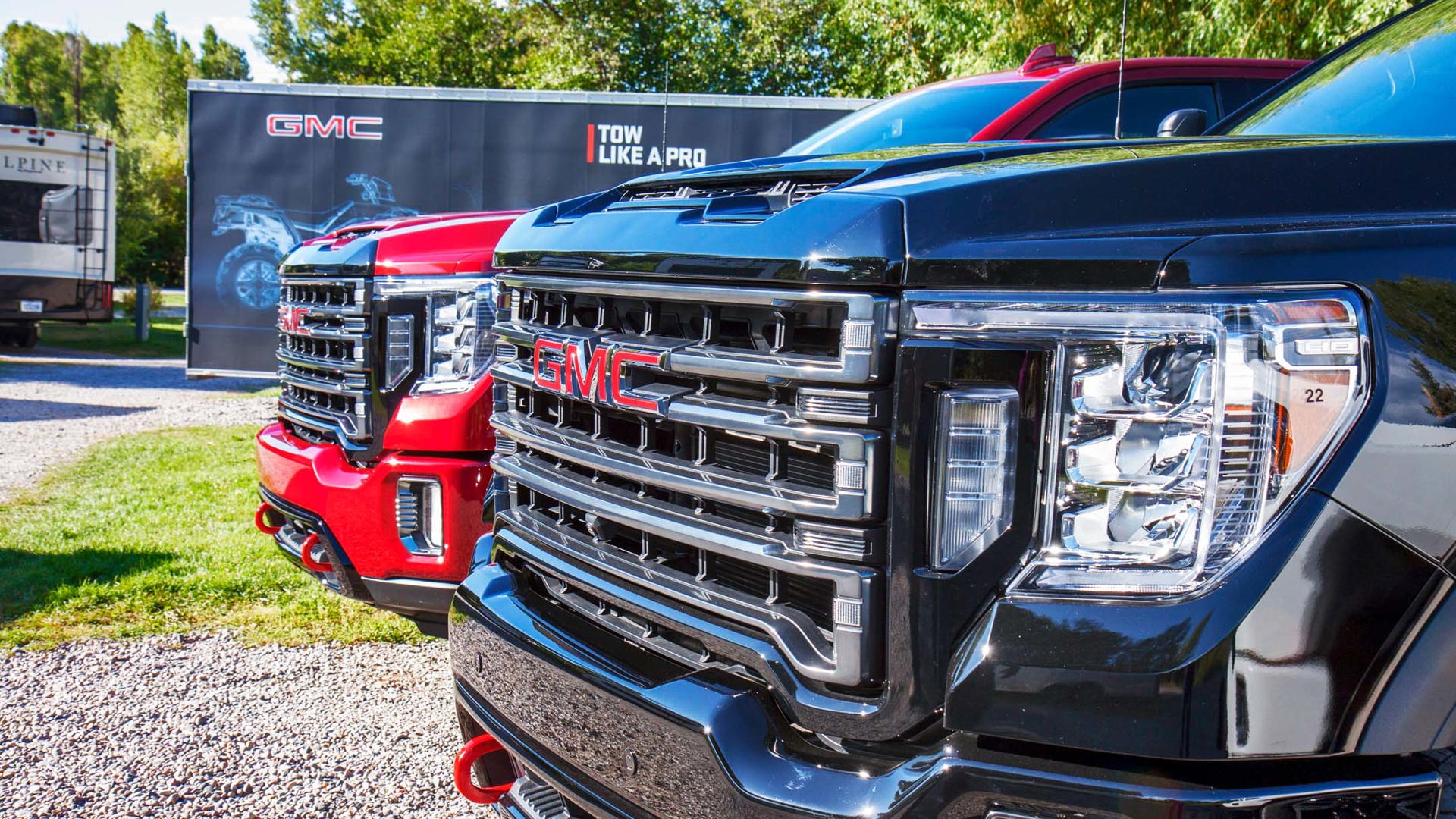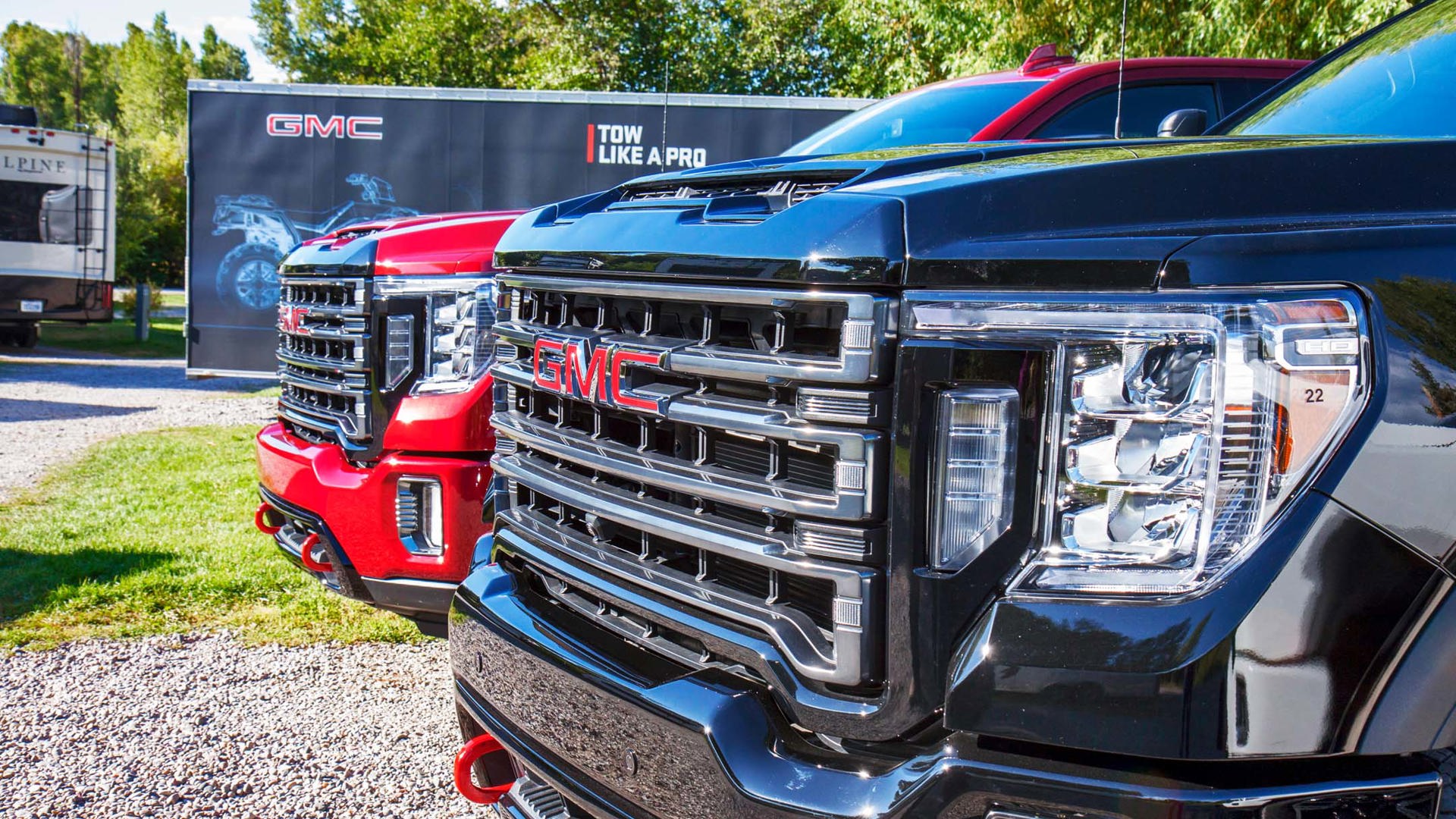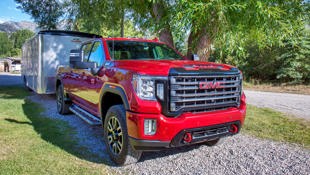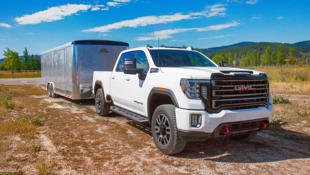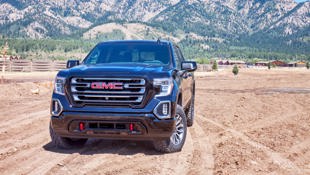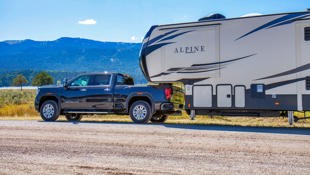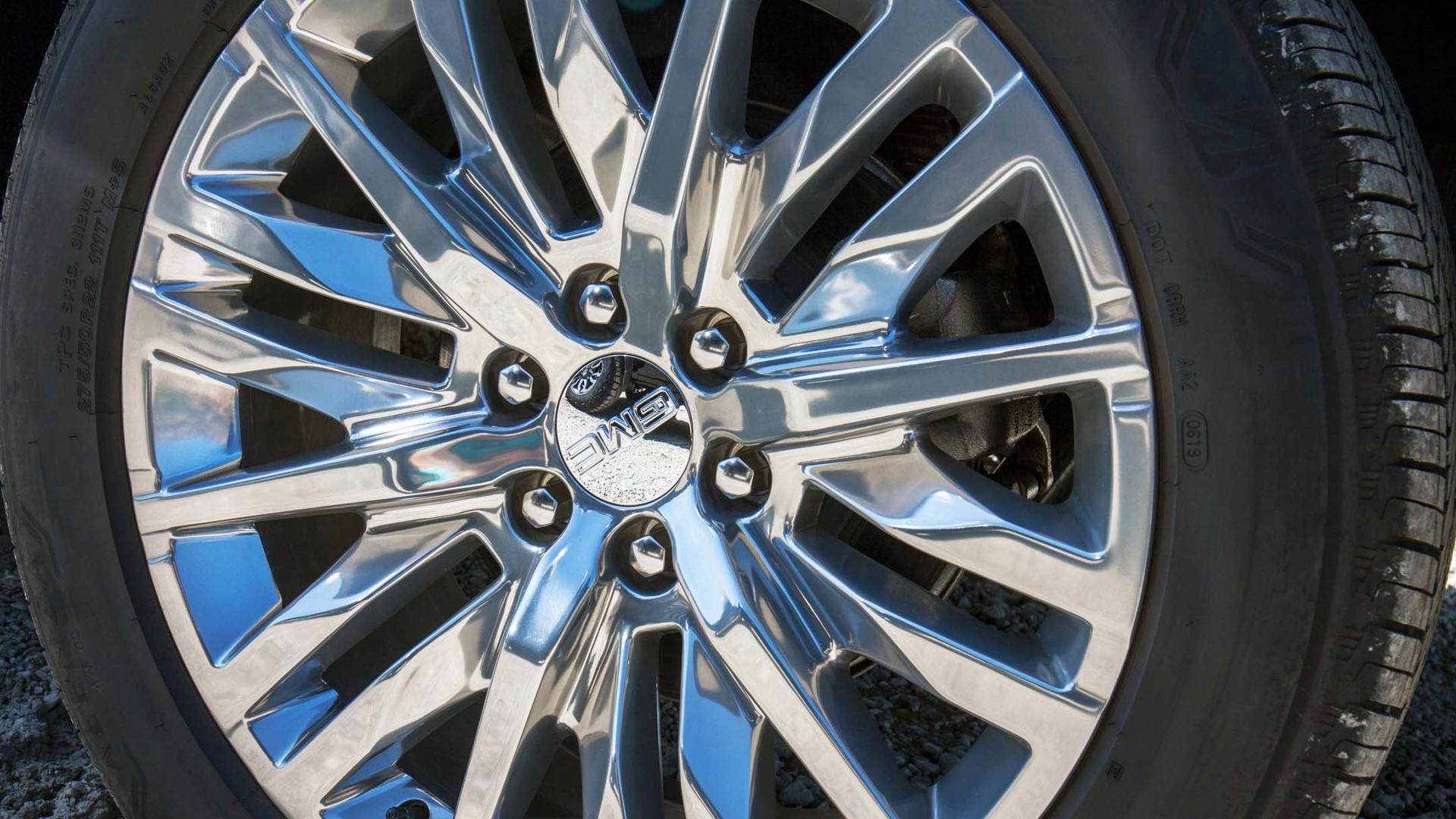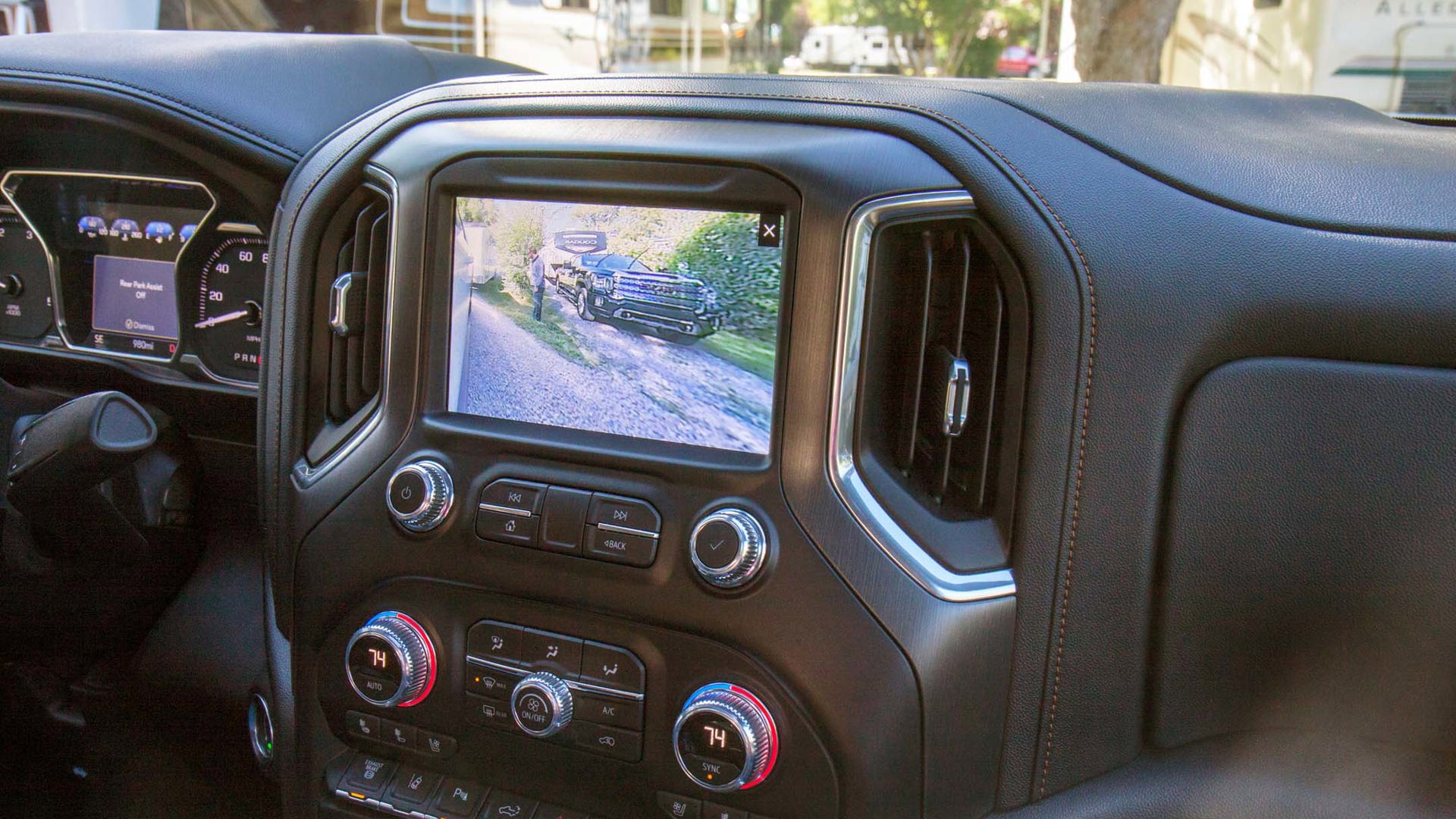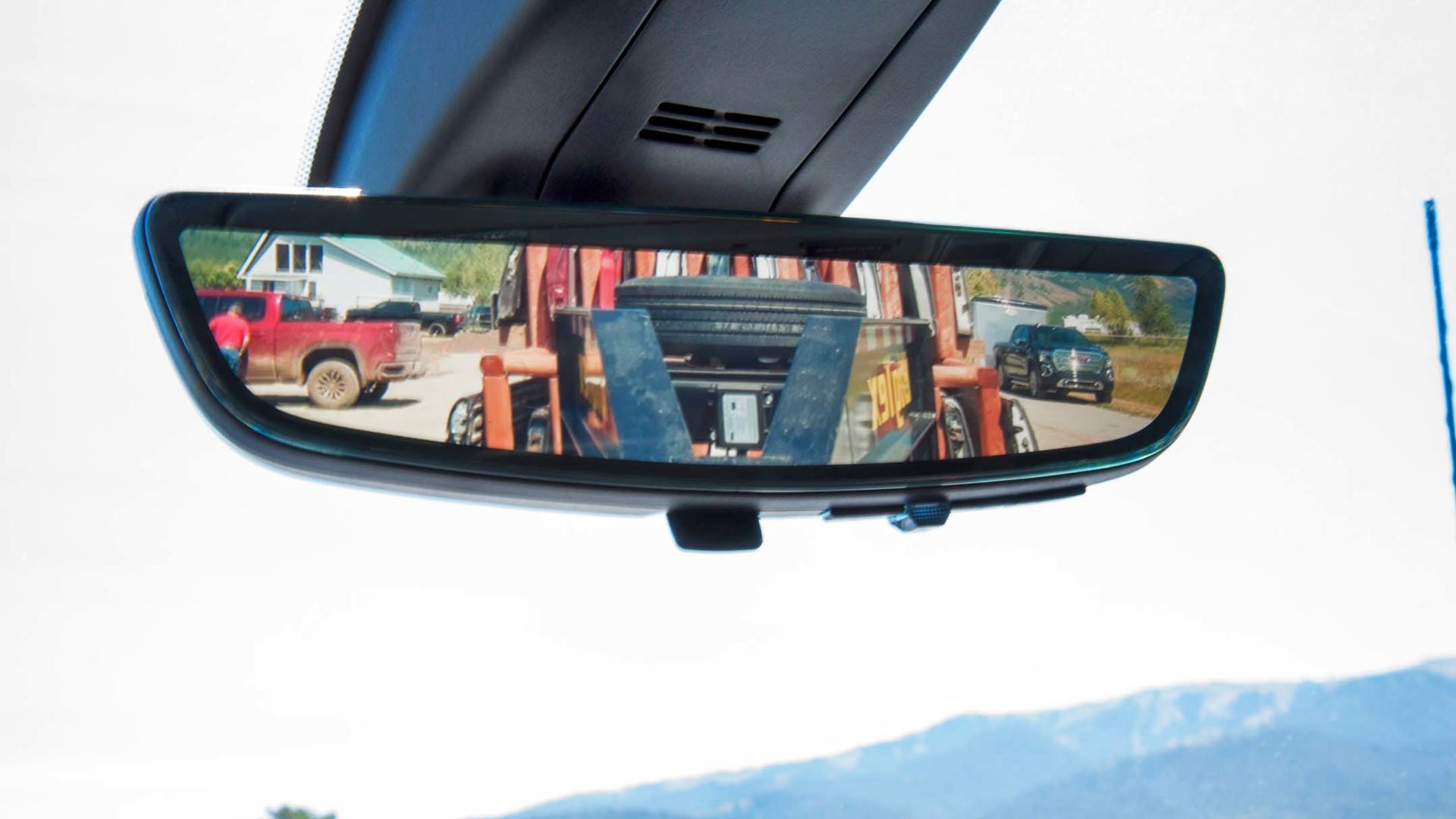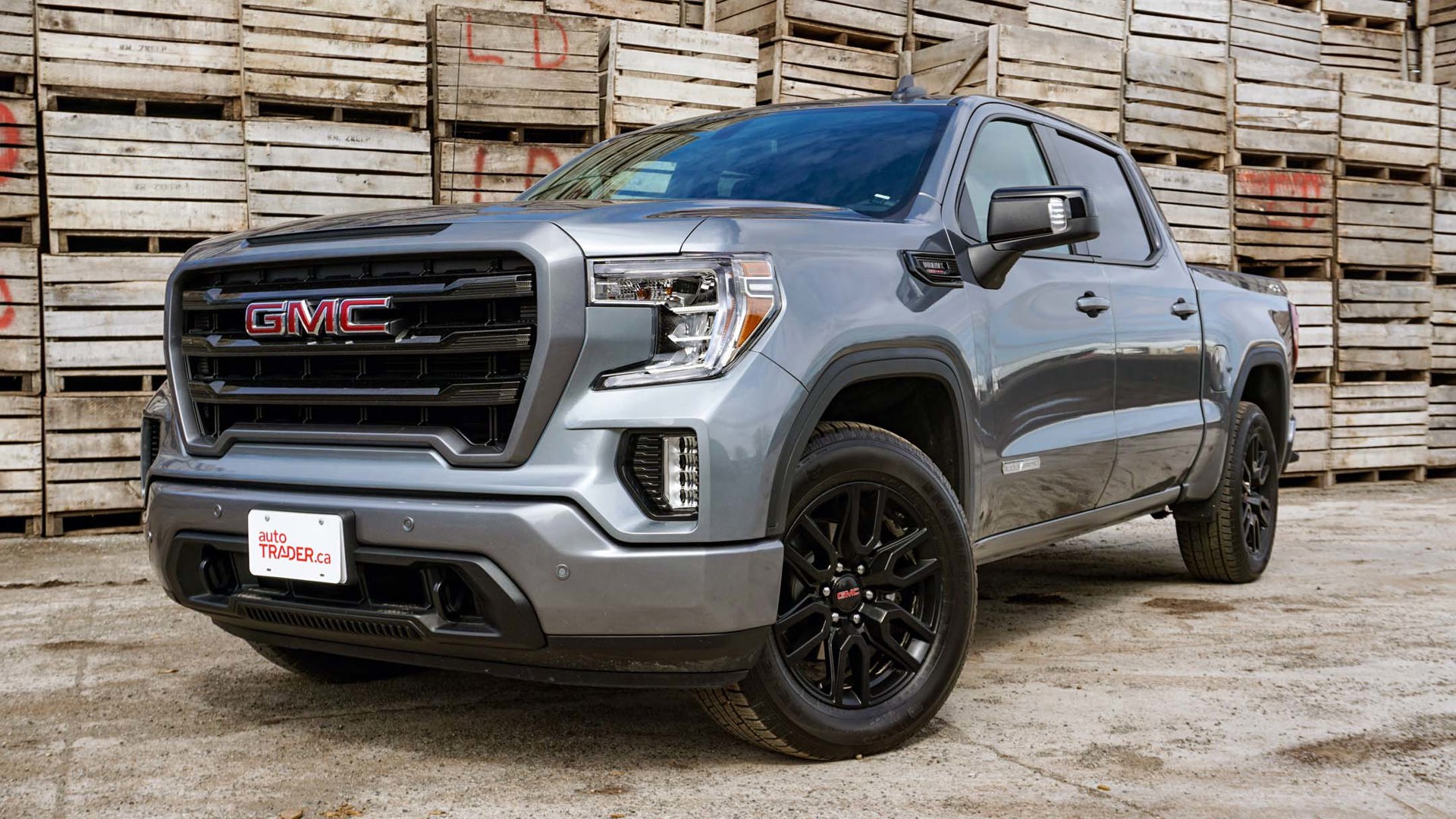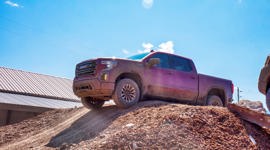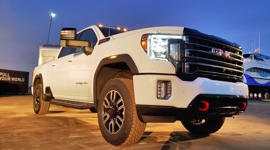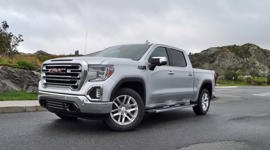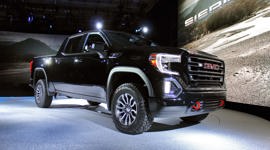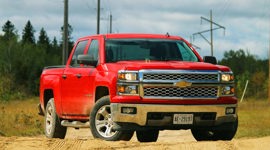 AutoTrader SCORE
AutoTrader SCORE
-
STYLING8/10
-
Safety9/10
-
PRACTICALITY8/10
-
USER-FRIENDLINESS7/10
-
FEATURES8/10
-
POWER9/10
-
COMFORT6/10
-
DRIVING FEEL7/10
-
FUEL ECONOMY8/10
-
VALUE8/10
JACKSON HOLE, Wyoming – We follow the sinewy curves of Snake River across the southeast canyons of Idaho and into Wyoming – Big Sky Country – where endless plains are embraced within the towering peaks of the Gros Ventre and Teton mountain ranges. It’s a likely place to encounter one’s own insignificance – especially when you consider that the average annual income of the wealthiest one percent in Teton County is a staggering $28-million. But despite being home to more billionaires than anywhere else in the United States, the cowboy hat and pickup truck are the status quo. In our chrome-bedazzled heavy-duty Sierra Denali we can almost say we blend right in.
All new for 2020, the Sierra follows on the heels of the Silverado, part of GM’s two-pronged strategy in the uber-competitive truck segment. Like its Chevy cousin, the Sierra HD boasts a 35,500 lb max tow rating and 7,000 lb max payload, but is designed to appeal to the “premium” truck buyer.
Styling: 8/10
It comes as somewhat of a surprise to find that the Sierra’s design director, Matt Noone, is a Brit – for what could be more all-American than a red-blooded, hairy-chested heavy-duty pickup truck? But Noone professes a love for American metal he’s had since a very young lad, and the Sierra certainly projects all the necessary machismo that North Americans expect from their working trucks.
All new from the ground up, the 2020 Sierra HD not only looks bigger – it is bigger. Like the Silverado, it rides on a new platform that’s longer, stronger, and with taller frame rails, expressly designed to deliver maximum towing and payload capability. Not a single body panel is shared with its predecessor, and only the roof is common to the smaller Sierra 1500. To distinguish itself from its Chevrolet cousins, GMC retains the chrome embellishments and design accents that attract a more premium customer. While the Silverado’s redesign was the target of considerable criticism, the gigantic, square face works well with the Sierra’s large grille, C-shaped headlights, and aggressive hood sculpture.
Good looks aside, the Sierra HD’s front end is formed by function, not style. The wide grille and functional hood scoop funnel cool air into the engine, while a second grille in the lower fascia serves to cool the transmission, and intercooler in the diesel. Signal lights are now mounted on each of the four wheel arches, which, as designer Noone notes, “makes it really easy to tell where all four corners of the truck are when backing up in the dark.” He also points out the flat door surfaces, which are devoid of any character lines to facilitate signage placement for contractors and businesses.
GMC’s been gradually adding an off-road-oriented AT4 trim to all of their truck and SUV lineups; and for 2020, the Sierra gets one too. Referring to the Sierra AT4 as “Premium Off-Road”, Noone suggests that the new trim will hopefully attract new customers without scavenging from Denali buyers. Unlike the previous All Terrain trim, which Noone calls “little more than an appearance package”, the AT4 models will include genuine off-road equipment: Rancho monotone shocks, hill descent and hill hold, Off Road Mode, transfer case with high- and low-range and skid plate, and bright red tow hooks in addition to unique blacked-out grille and wheels.
While Sierra 1500 AT4s will be more off-road-focussed, Noone emphasized that the AT4 Heavy Duty’s towing capacity was in no way compromised. In other words, if off-roading is your priority, you’d be better off with the Sierra AT4 1500.
User Friendliness: 7/10
Let’s face it, towing big things is intimidating, and not just due to the inherent danger. For many people, it’s also an unknown. The Sierra HD’s row of switchgear is well-marked, with only a slight learning curve for trailer brake adjustment, exhaust braking, and four-wheel drive modes.
Hitching up a rig on your own couldn’t be easier with the new camera system and the app’s interface is user-friendly too. A row of buttons on the 8-inch touchscreen controls the camera views, and side views are displayed when the turn signals are used.
Filling up DEF (diesel exhaust fluid) is now done through the fuel filler door instead of popping the hood and reaching into the engine bay.
If you’re smaller in stature, driving one of these big trucks, and having to transfer cargo can be awkward. The new Sierra HD features a lower window beltline to improve visibility, and the height of the bed has been reduced as well. All four corners of the box now feature step-ups that are large enough to accommodate a work boot, and make it easy for even short folks like me to access what’s in the bed or on the roof rails.
Safety: 9/10
Tim Herrick, Sierra’s chief engineer says that of drivers they surveyed, “53 percent said towing was stressful. The other 47 percent lied.” Towing a big load is challenging, especially when you consider that we’ve traditionally done it mostly on faith. Visibility is next to nil, and the odds of scratching, denting, scraping – or worse – are enormous, not to mention how utterly humiliating backing up can be for the inexperienced.
Sierra’s trailer monitoring tech, shared with the Silverado, is simply the best system currently on the market. Backing up a large rig has always been my own personal towing kryptonite. Rather than additional buttons or knobs to press that do the steering for you, GMC offers a six- or optional eight-camera system that gives you virtually unlimited views of your load. There are 15 possible views that can be displayed on the touchscreen, including one that stitches all the cameras’ inputs together to create an “invisible” trailer, giving you a clear view of any traffic behind or to the side.
Hitching is easy – I did it on the first try – thanks to a bumper camera that showed the ball with a handy guidance line that made it easy to keep it straight. Towing a 13,000 lb camper trailer 75 miles over the mountains from Alpine to Jackson was made easier by having a full view down the side of the trailer whenever I used a turn signal. You can even have a camera installed inside the trailer to keep an eye on live cargo. A short jaunt of a few miles hauling a colossal load of over 30,000 lb was still nerve-wracking, but it was reassuring to at least have an idea where all my wheels were.
Other apps in the package will test your light system, and monitor tire pressure.
Also worth mentioning is the engine brake function on diesel models. Rather than submit the mechanical brakes to tremendous wear and tear – or possible failure – on steep grades, employing exhaust brake in Tow/Haul mode helped us maintain a steady downhill speed with a tap of the brakes.
Practicality: 8/10
It’s hard not to mention practicality when you’re talking about an enormous heavy-duty workhorse. As a daily driver it makes an effort to be comfortable, but the Sierra HD’s sheer size makes it really inconvenient to navigate in heavy traffic. But if towing heavy loads is a priority, the Sierra HD is purpose-built for the job. Although the max tow rating of 35,500 lb is achieved with a regular cab version of the Sierra 3500HD dually, Chief Engineer Herrick emphasizes that every Sierra 3500HD dually is capable of towing 30,000 lb.
A brief detour into a shopping plaza proved that such parking lots aren’t designed with big trucks in mind, but I was able to back safely into a parking spot with only a glance at the back-up camera.
Features: 8/10
GM made a lot of noise at the Sierra’s Detroit auto show debut about their “industry first” carbon-fibre bed. It’s an optional bedliner made from carbon-fibre-reinforced plastic that’s dent- and scratch-resistant. We were invited to throw cement blocks, hit it with baseball bats, and carry a 2,000 lb payload of lumber back to our Jackson hotel to prove how indestructible it is. Though it did indeed prove dent-proof, tossing a cinder block into the bed managed to scuff up its surface.
Introduced on the 2019 Sierra 1500, the origami-like Multi-Pro tailgate is now standard on upper-trim Heavy Duty trucks too. The lightweight aluminum tailgate features six different positions, to help load or secure cargo, as a handy step up into the pickup bed, and to create second-tier loading.
We’ve talked about the first-rate camera system, and there’s also an additional feature to the trailering app that lets you remotely adjust your camping trailer’s climate controls using your smartphone. The multi-colour head-up display is a nice touch too.
Comfort: 6/10
The cabin is comfortable if fairly plain, even on the top-spec Denali models. For a truck that GMC considers “the only premium truck brand” and could possibly top 100 grand with all the boxes ticked, the cabin falls far short of the beautifully executed interiors in the top-trim Ram or Ford. There are plenty of hard plastics; and the dash, gauges, and touchscreen look old-school compared to Ram’s. Still, it’s a comfortable environment over the long haul, and we appreciated the ventilated front seats on the hot sunny day of our test.
Driving Feel: 7/10
Unlike competitors which use solid axles front and back, the new Sierra HD uses an independent suspension up front. For a big rig, the truck is fairly compliant and the rear end isn’t overly busy when not towing, though it does feel more planted with a load. There’s no telltale clattering from the diesel engine, though the dual air intakes do produce a lot of noise. The segment-first 10-speed transmission is a smooth performer, which not only helps with the engine’s efficiency, but keeping it within optimum revs helps reduce noise too.
Power: 9/10
There’s an optional 6.6-litre gasoline engine, but my drives consisted only of the 6.6-litre diesel producing 445 hp and 910 lb-ft of torque. That’s less torque than either Ford or Ram, but the Sierra’s 35,500 lb max tow rating and 7,442 lb payload are higher.
Fuel Economy: 8/10
There are no official fuel number ratings for the Sierra Heavy Duty but during our test drives, we saw numbers as low as 12.0 L/100 km while highway driving, which soared to more than 25 L/100 km while towing a 14,000 lb house trailer through the mountains
Value: 8/10
Canadian prices won’t be released until the truck’s arrival late summer or early fall. US prices start at $40,000, and go up to $78,000. Expect to pay a spectacular $11,195 premium if you opt for the diesel over the gas.
Whether you consider that a good value depends on how important towing is to you. The Sierra HD is a massively capable work truck capable of hauling staggering weight – safely
Conclusion
The back and forth numbers war between the heavy duty segment shows no sign of abating. GM’s Silverado and Sierra were for a while, distant third. With the arrival of the 2020 models, they’ve surged to the front in strength, capability, and stress-free usability.
| Engine Displacement | 6.6 L |
|---|---|
| Engine Cylinders | V8 |
| Peak Horsepower | 401 hp (gas), 445 hp (diesel) |
| Peak Torque | 464 lb-ft (gas), 910 lb-ft (diesel) |
| Fuel Economy | |
| Cargo Space |
